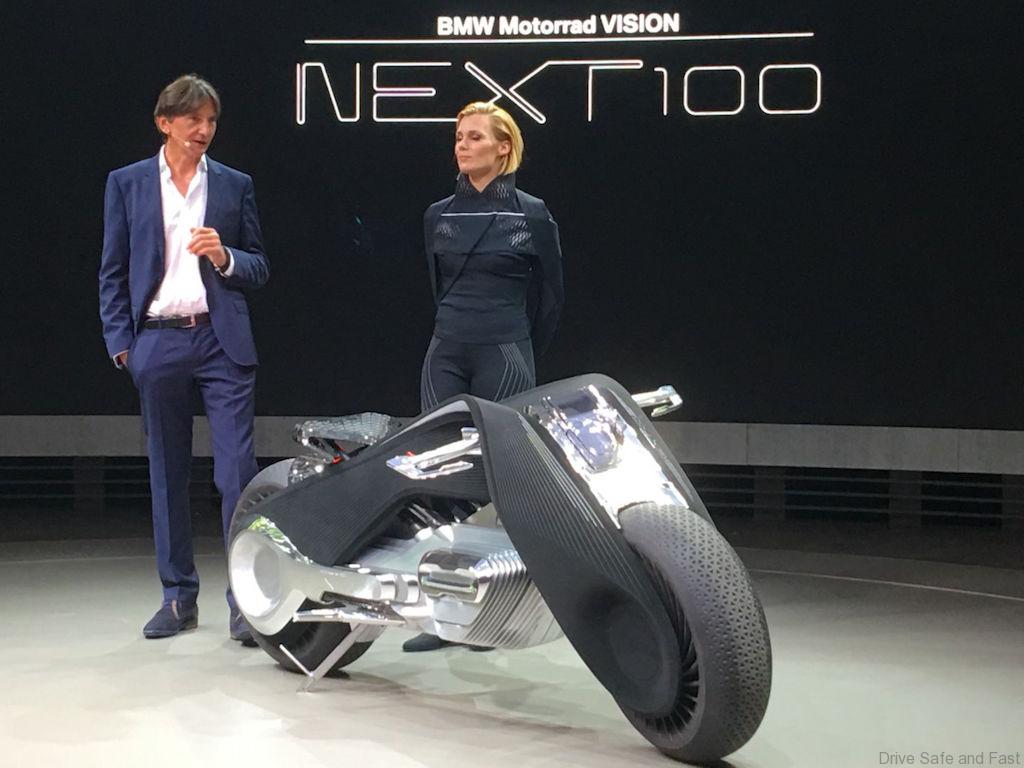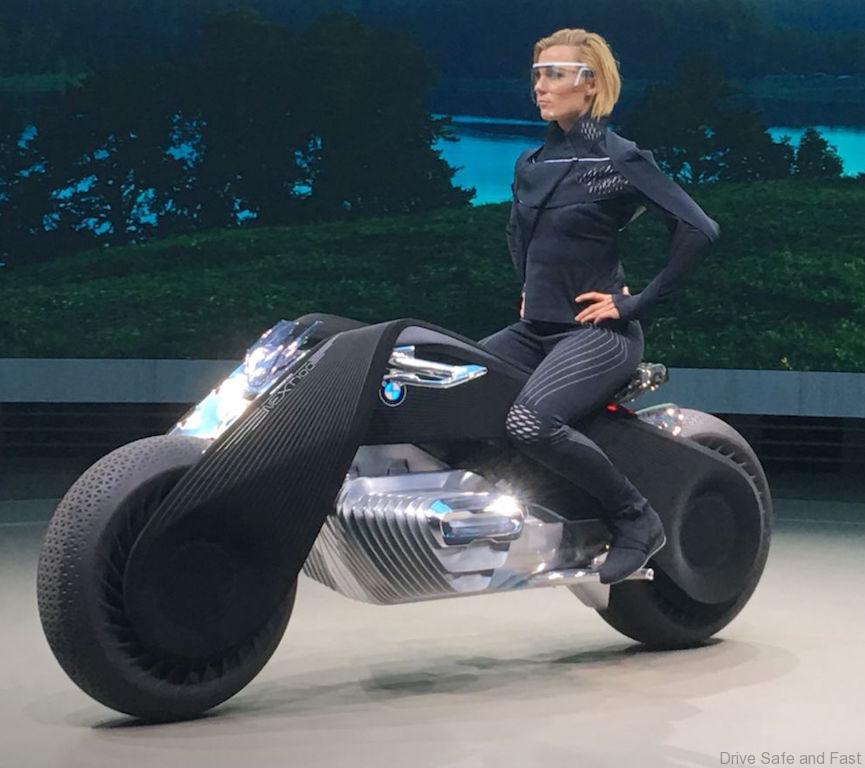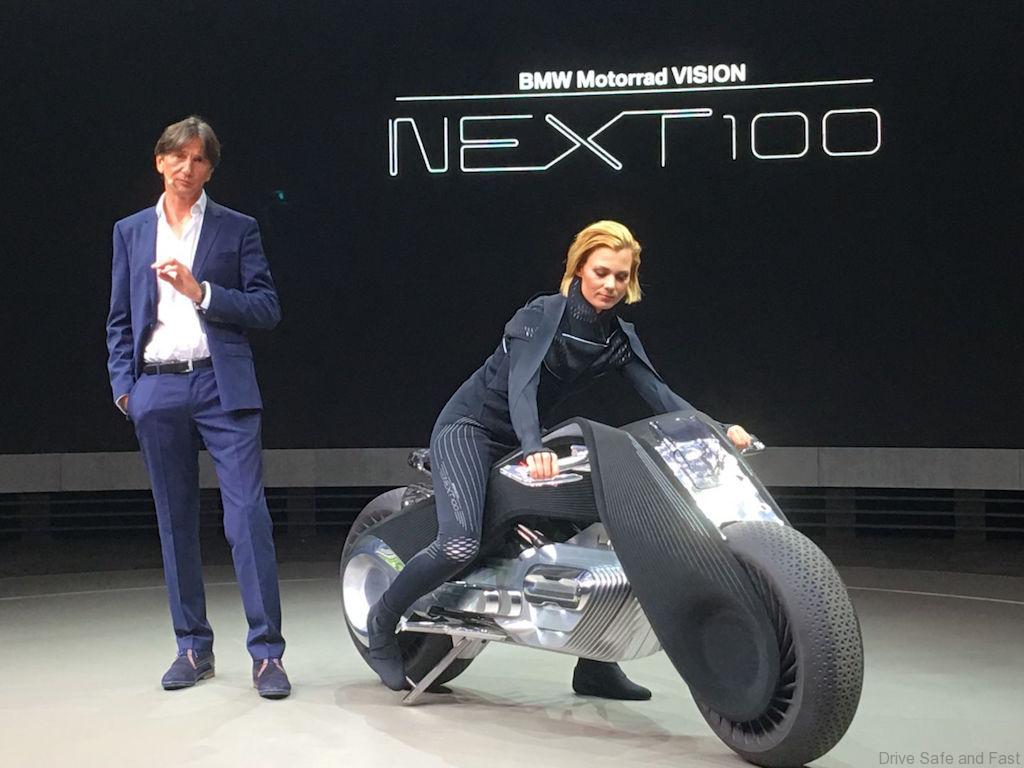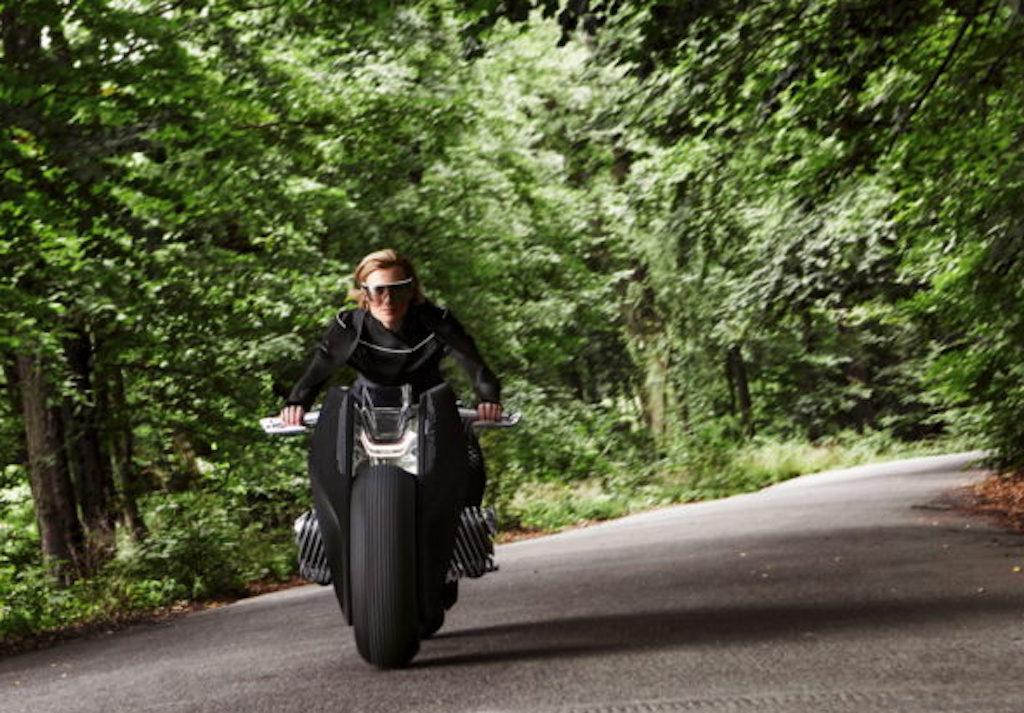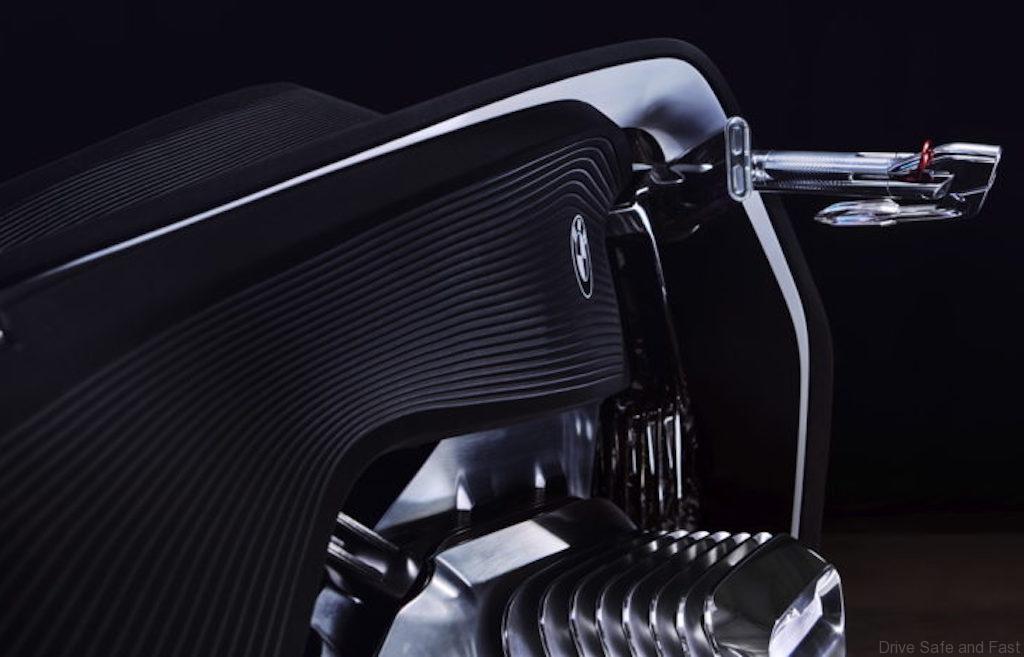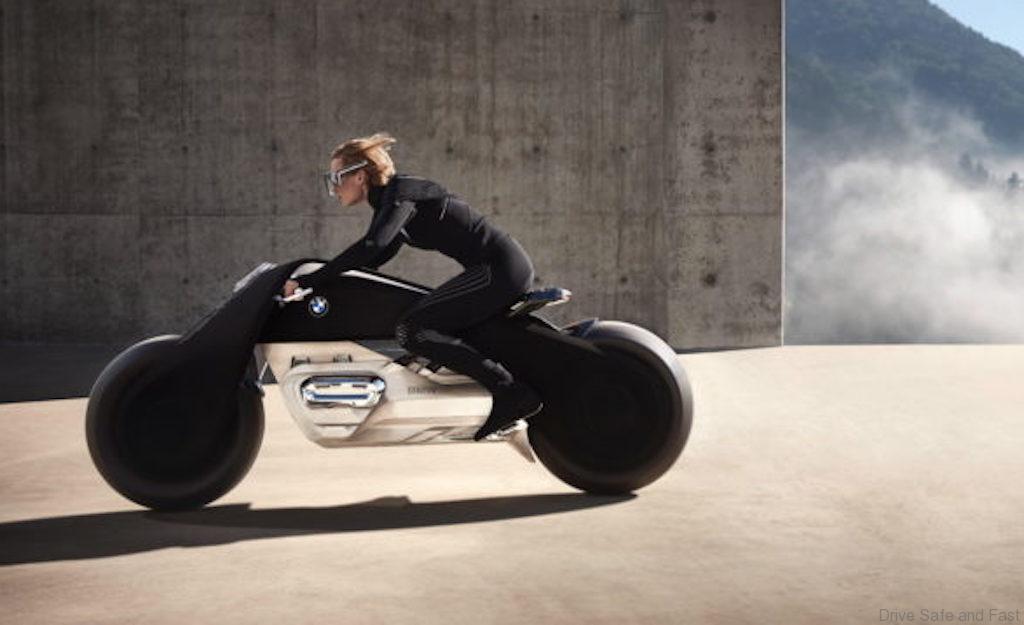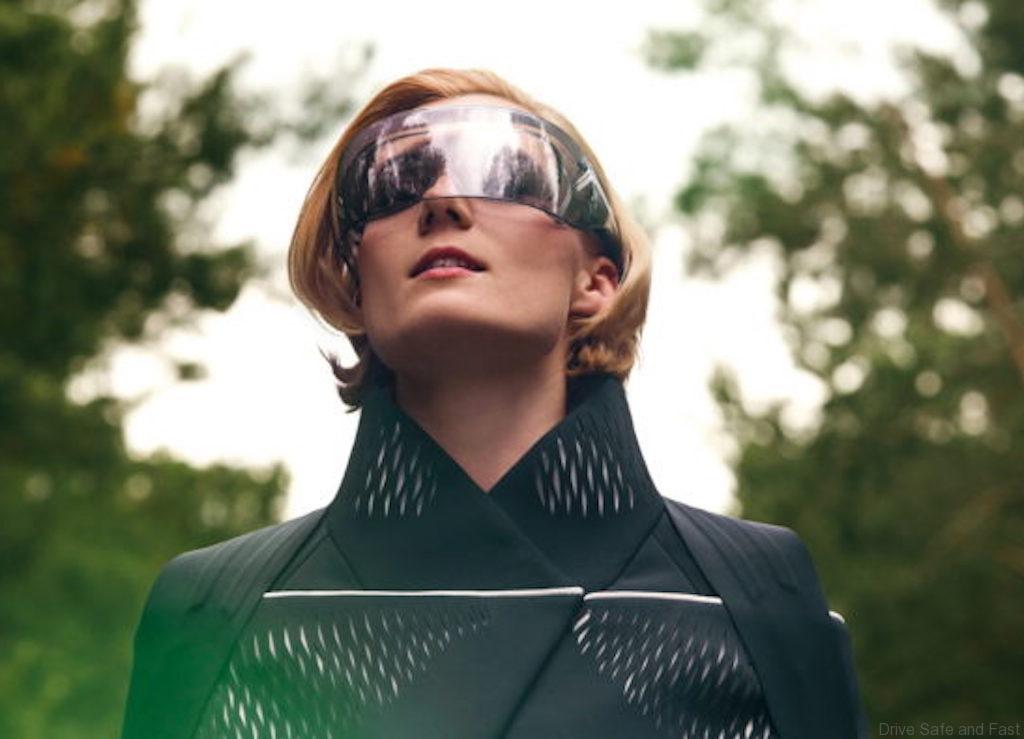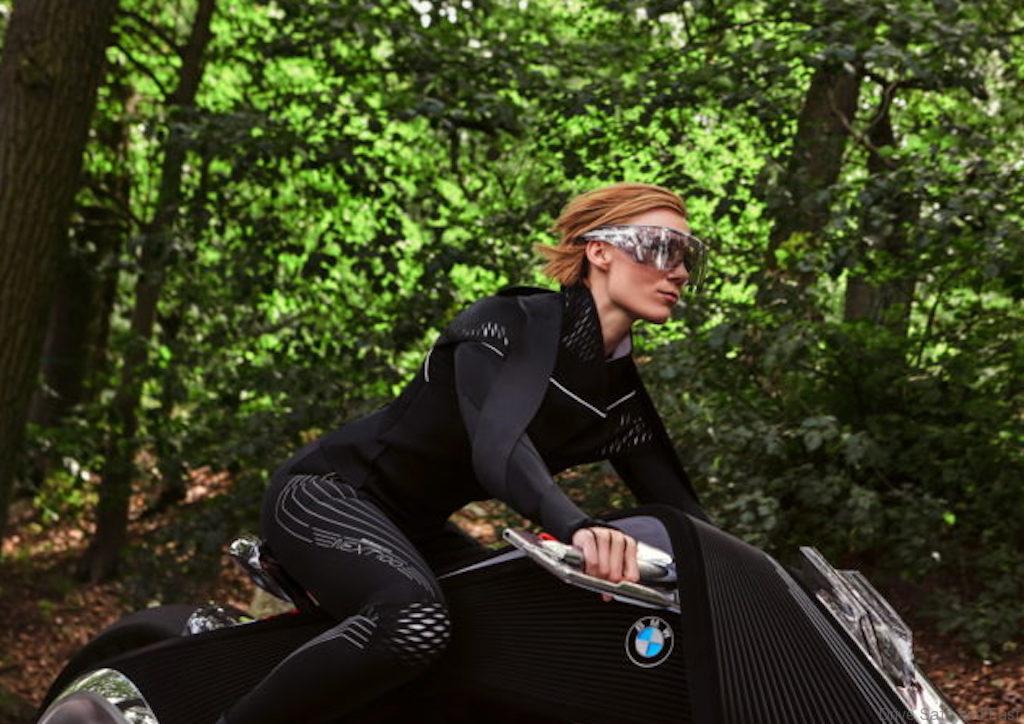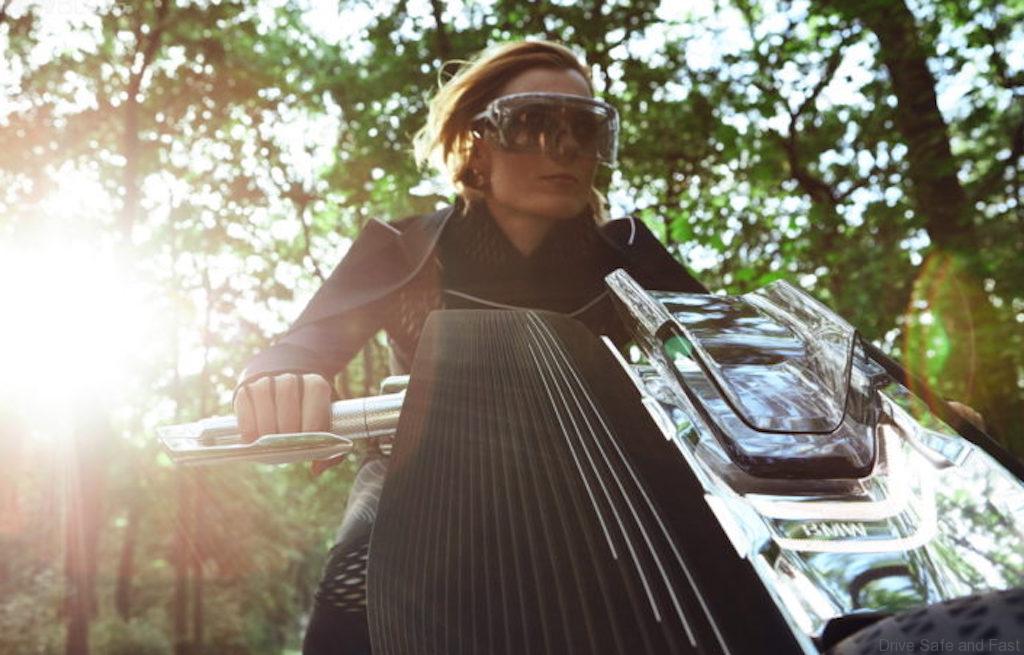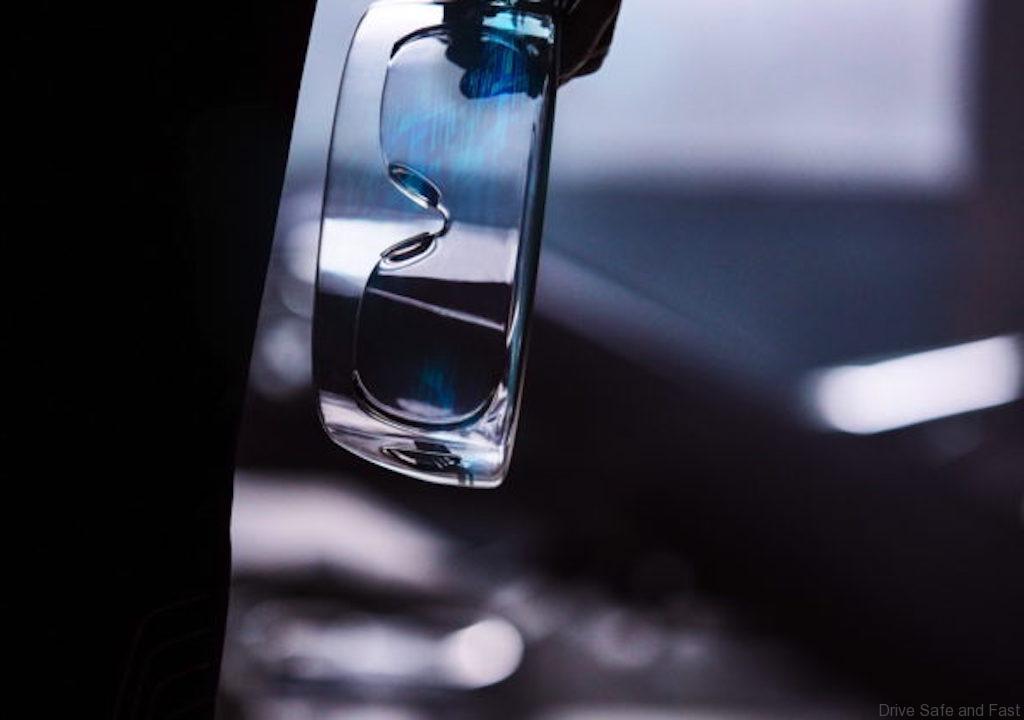BMW has now revealed its next progressive solution, this time for the world of motorcycling: the BMW Motorrad VISION NEXT 100. The electric-powered concept motorcycle is powered by a zero-emissions solution.
The black frame triangle of the BMW Motorrad VISION NEXT 100 is a deliberate reference to the first ever BMW motorcycle, the R32, made in 1923. On the vision bike, however, it has been reinterpreted to form a functional sculpture linking the front and rear wheels with a dynamic sweep. Bearings and joints are nowhere to be seen; instead the frame appears as a single, integrated whole.
Viewed from the side, the frame of the BMW Motorrad VISION NEXT 100 lends it the character of a naked bike, with ergonomics to match and a seat in the roadster position. The clever arrangement of surfaces protects the rider from wind and weather as effectively as a full fairing. The surface of the frame is covered in matte black textile, its silky sheen and fine lines highlighting the characteristic forms and representing a contemporary reinterpretation of this classic BMW detail. The BMW logo is optimally displayed on the dark frame. It is illuminated in the familiar blue and white colors while driving.
The Flexframe appears as a single, integrated whole that extends from the front to the rear wheel of the BMW Motorrad VISION NEXT 100. Being flexible, it allows the bike to be steered without the various joints found on today’s motorcycles. Turning the handlebar adjusts the entire frame, changing the direction of the bike. The amount of strength needed to steer depends on the situation: at standstill, the Flexframe allows a light steering whereas at higher speeds it remains very rigid.
The front is minimalist in design and enhanced with high-quality details. Integrated into the frame above the front wheel is a large metal reflector incorporating the two vertically positioned, U-shaped elements that make up the daytime running light. It also acts as a wind deflector and, in combination with the small, integrated windshield, helps to optimise the air flows. Body elements such as the seat, upper frame cover and wings are made of carbon.
Beneath the seat shell, two fine, red, illuminated strips form the rear light and indicators – picking up on the typical double-C form of the rear lights on today’s BMW Motorrad bikes – but with a new, futuristic twist. Damping is provided by the tyres, whose variable tread actively adjusts to suit ground conditions and ensure the best possible grip in any situation.
In the middle of the triangle frame sits a style feature and historical reminder: the power unit. Designed and created in the image of the traditional BMW boxer engine, it actually consists of a zero-emissions drive unit. Its outward appearance changes depending on the circumstances: when the bike is resting, the power unit is compact, extending outwards only when the bike sets off, to enhance aerodynamics and protect the rider from the elements. Its polished aluminium finish confirms the superior quality of this component.
Overall, displays, cables and buttons are a rare sight on the BMW Motorrad VISION NEXT 100. But amid the clear forms of its front is one element that immediately stands out: a red rocker-switch on the right-hand end of the handlebar. This obviously mechanical element blocks or releases the throttle grip and is a homage to the analogue days of original biking. The hand levers with their outward-facing joints are also a reminder of days gone by. BMW’s VISION 100 bike employs active assistance systems of the future which will also enhance stability and safety by automatically balancing the motorcycle, both out on the road and when stationary. Novice riders will benefit from additional guidance in all riding situations and from a bike that will never tip over.
The BMW Motorrad VISION NEXT 100 rights itself while even stationary, remaining upright when the rider has dismounted. The balancing systems also work out on the road to ensure a particularly agile and dynamic riding experience with even lighter handling, which seasoned riders will appreciate, and all the benefits of assistance systems to enhance their capabilities even further.
A Digital Companion provides the situational information and active support the rider needs, while remaining in the background. The system though is constantly active and it works away unnoticed until required to issue an alert via the user interface or provide active assistance, for instance. Unless the rider or circumstances require it, the Digital Companion remains silent.
Information exchanges between rider and bike take place largely via the visor. This essentially consists of a pair of data glasses that extends across the wearer’s entire field of vision. As well as providing wind protection, it shows relevant data in one of four designated display areas. These are controlled by the rider’s eye movements: looking up or down changes the content that appears, and looking straight ahead switches the information off completely, leaving the rider to focus even more fully on biking experience. Information is only projected onto the visor on request, or to alert the rider to the fact that action is needed.
When suggesting lines and angles, the Digital Companion appears in the lower third of the field of view, represented by an upturned triangle from which two horizontal lines extend outwards. Like the display in an aeroplane cockpit, this symbol indicates the current banking angle and ideal lines. If the bike’s current position does not match what is suggested, the rider can correct it as necessary. If he or she responds too late or not at all, the bike will correct itself.
Looking upwards activates the rear-view function in the visor, allowing the rider to see what is going on on the road behind. Lowering the eyes to normal levels opens a menu from which the rider can select an option by pointing a finger. Looking further down opens the map view showing the rider’s chosen route.
The rider’s gear accompanying the BMW Motorrad VISION NEXT 100 is integral to the unique overall experience. In classic black and white, the airy suit enhances the sense of freedom and is both fashion statement and weather- wear. Depending on conditions, it warms or cools the user. While the diagonal zipper across the chest is reminiscent of traditional motorcycle clothing, the flexible, banded structure of the suit and shoes is inspired by the muscle areas of the human body and provides body support and relief whenever needed.
At higher speeds, the neck section inflates to provide extra support for the upper vertebrae and improve overall comfort. Variable openings offer additional ventilation. Unlike present-day suits, however, the futuristic outfit for riders of the BMW Motorrad VISION NEXT 100 offers no safety features, because the bike’s intelligent assistance systems make them superfluous.
Instead, sensors in the suit keep track of the wearer’s pulse rate and body temperature and provide the right level of heat or cold. The suit also delivers navigation instructions via the vibrating elements in the arms and legs, and alerts the rider when the banking angle is becoming critical.
“Motorcycling is about escaping from the everyday: the moment you straddle your bike, you are absolutely free. Your bike is The Great Escape,” says Edgar Heinrich, Head of Design at BMW Motorrad, by simply describing the vision behind the motorcycle of the future.

